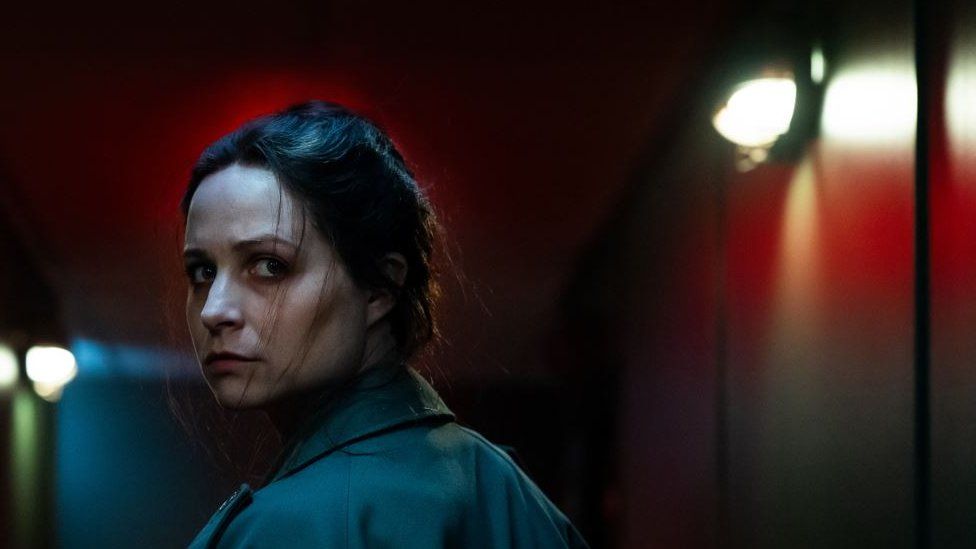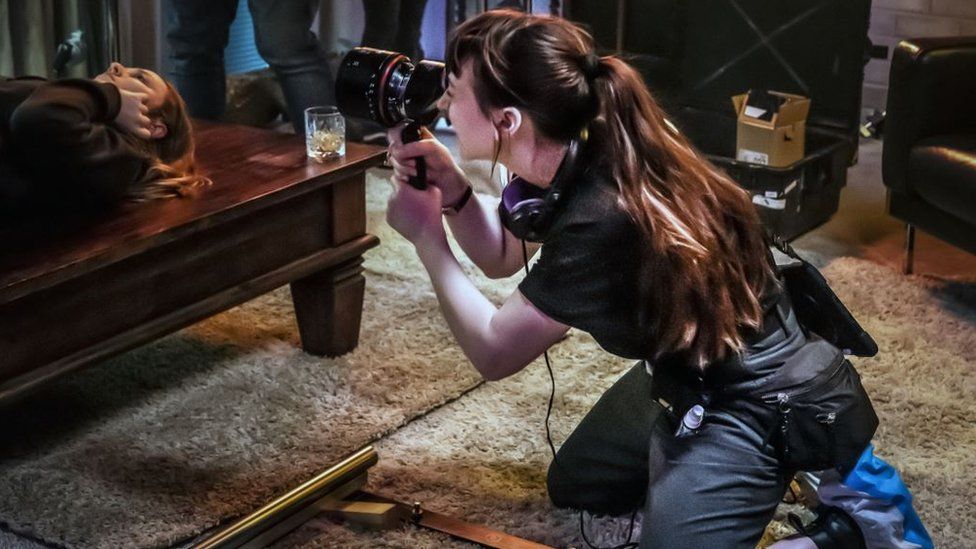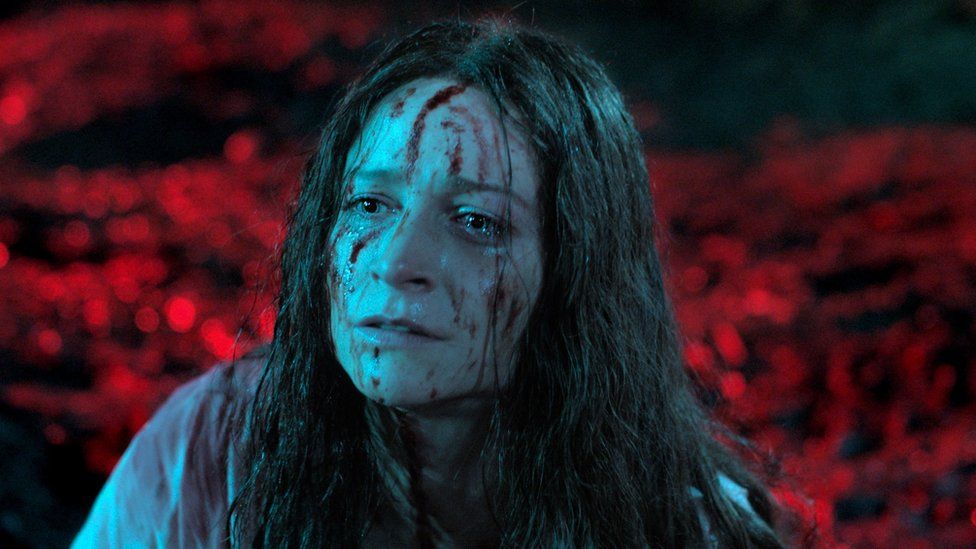
Can new technology provoke the fear it will cause a breakdown in human social behaviour?
Filmmaker Prano Bailey-Bond poses this question in her first feature film Censor, set in the so-called "video nasty" era of the 80s.
During that time, low-budget horror films were released directly to watch on home video recorders.
Bailey Bond's film explores how Enid (Niamh Algar), a film censor, slowly unravels after viewing a "nasty" that reminds her of her sister's childhood disappearance.
Enid tries to solve the puzzle behind the film and its director, blurring the line between fiction and reality.

The Welsh director says her film "poses this idea that as humans we are so afraid of ourselves, that in some people's minds we are just one step away from doing something terrible, as though you could just watch a film and your moral compass is completely thrown out of the window".
She discusses the "social and political hysteria" around video nasties, saying: "When this new technology, VHS, came out, there was a boom in these lurid horror movies as these films could be delivered straight to video and so to our homes.
"The lack of censorship for these films provoked a public discussion that this new era would threaten our social psyche."
Bailey-Bond argues that new forms of technology often provoke some form of cultural panic.
'Ridiculous'
"In the 1950s there was fear of what comic books would do to children, the same fear has existed around gaming and music.
"Looking back at the 1980s, we can say that was ridiculous. Those films that we feared would ruin our minds are being released uncut and celebrated."
The director adds that she accepts that "the conversation around our relationship with social media is more complicated."

But she also points out that she and her co-writer Anthony Fletcher set Censor amidst the violence of the miners' strike and the unemployment of early 1980s Britain.
"Video nasties were an easy scapegoat. The backdrop to them was social cuts. Youth centres were shut down, so what are kids going to do? It leads to people with time on their hands and not enough support.
"So perhaps if people were going to do something bad, maybe it was because of that? I find it really fascinating that you can push the blame onto horror films."
Bailey-Bond adds that one feature of the horror films of the period was frequent violence towards the female characters, which affected her choices for her own film.
Women and horror
"I was thinking of writing an opening scene using a male character as a victim in a fictitious 'nasty' but it wouldn't have fitted in with the period, it was mainly women on screen and men behind the camera. Anthony and I also thought of writing a female director character in the film, but it wasn't realistic - there were barely any women making these kinds of films."Halloween horror with Oscar potential ★★★★☆
The current climate for women filmmakers and the horror genre is much better, Bailey-Bond says.
St Maud, a recent British horror film starring Morfydd Clark and directed by Rose Glass, had a record 17 British Independent Film Award nominations. Censor was also chosen for this year's Sundance Film Festivals in both the US and London.
"There was a time when making horror films wasn't very appealing and nor were female directors, and luckily it all changed around the time we were writing Censor," Bailey-Bond explains.
"Fortunately, there have been films such as Julia Ducornau's Raw and The Babadook in recent years, and whoever took chances on getting those films funded paved the way for filmmakers like me.
"We're also seeing more interesting female characters on screen in horror films, and I know I'm generalising here, but women are often drawn more to the psychological aspect of a character."

She explains that after test screenings, the women they spoke to liked the idea of Enid's "shadow self", which suggested that "underneath there's something very painful".
"It's that idea of a woman putting more and more pressure on herself, blaming herself and taking on too much responsibility for everything that's happened to her in life."
Censor was shot on 35mm film, with some footage from Super8 and VHS too, which the director hopes will evoke her own vision of the Britain of that time period.
"I grew up devouring VHS in the 1980s and recording things off the TV," she recalls.
"I remember us trying to get the TV aerials to work when it was windy. The quality of pictures was often grainy, and there's this textured quality to the photos of my childhood. I was trying to bring to life a different Britain of the 1980s and not that glamorous world we often see - it wasn't all spandex and ghetto blasters.

"The video nasties were a good juxtaposition against that world, because they were full of vivid colours and lurid video covers that really drew people in.
"For some people they were a vibrant journey into another world away from grey 1980s Britain."
Censor is released in UK and Irish cinemas from 20 August, 2021
https://ift.tt/2UsSJPs
Film
Bagikan Berita Ini














0 Response to "Censor: Video nasty film explores the power of horror - BBC News"
Post a Comment